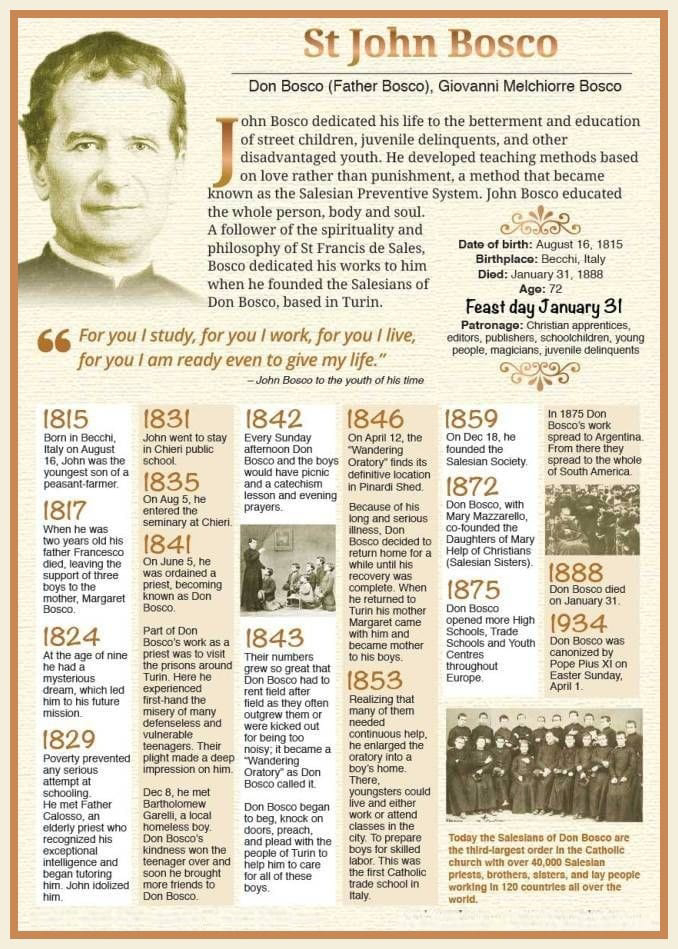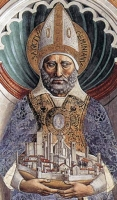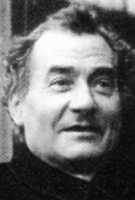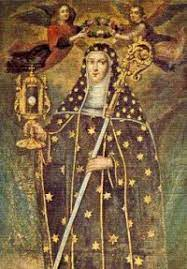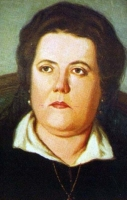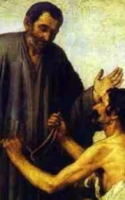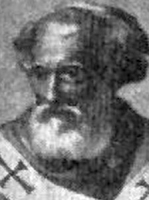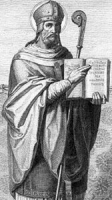Saint John Bosco
புனிதர் ஜான் போஸ்கோ
(St. John Bosco)
குரு/ ஒப்புரவாளர்/ நிறுவனர்/ இளையோரின் தந்தை மற்றும் ஆசிரியர்:
(Priest, Confessor, Founder, "Father and Teacher of Youth")
பிறப்பு: ஆகஸ்ட் 16, 1815
காசல்நுவோ டி’அஸ்டி, பியத்மான்ட், சர்டீனியா அரசு
(Castelnuovo d'Asti, Piedmont, Kingdom of Sardinia)
இறப்பு: ஜனவரி 31, 1888 (வயது 72)
துரின், இத்தாலி அரசு
(Turin, Kingdom of Italy)
ஏற்கும் சமயம்:
ரோமன் கத்தோலிக்க திருச்சபை
(Roman Catholic Church)
ஆங்கிலிக்கன் சமூகம்
(Anglican Communion)
முக்திபேறு பட்டம்: ஜூன் 2, 1929
திருத்தந்தை பதினொன்றாம் பயஸ்
(Pope Pius XI)
புனிதர் பட்டம்: ஏப்ரல் 1, 1934
திருத்தந்தை பதினொன்றாம் பயஸ்
(Pope Pius XI)
முக்கிய திருத்தலங்கள்:
கிறிஸ்தவர்களின் சகாய அன்னை பேராலயம், டூரின், இத்தாலி
(Basilica of Our Lady of Help of Christians, Turin, Italy)
நினைவுத் திருவிழா: ஜனவரி 31
பாதுகாவல்:
கிறிஸ்தவ வேலை பழகுபவர் (Christian Apprentices),
பதிப்பாசிரியர்கள் (Editors),
பதிப்பாளர்கள் (Publishers),
பள்ளிசிறார்கள் (School Children),
கண்கட்டி வித்தை புரிவோர் (Magicians),
இளம் குற்றவாளிகள் (Juvenile Delinquents),
இளையோர் (Young People)
புனிதர் ஜான் போஸ்கோ, "டான் போஸ்கோ" (Don Bosco) என்ற பெயரில் பிரபலமானவர். இவர், ஓர் இத்தாலிய ரோமன் கத்தோலிக்கக் குருவும், கல்வியாளரும், பத்தொன்பதாம் நூற்றாண்டின் எழுத்தாளரும் ஆவார்.
டூரின் (Turin) நகரில் இவர் பணிபுரிந்த காலத்தில், தொழில்மயமாக்கல் (Industrialization) மற்றும் நகரமயமாக்கல் (Urbanization) ஆகியவற்றினால் மக்கள் பெரிதும் பாதிப்புகளுக்கு ஆட்பட்டிருந்தனர். தெருக்களில் வாழும் சிறுவர்கள், இளம் குற்றவாளிகள் மற்றும் பிற குறைபாடுடைய இளைஞர்களின் கல்விக்காக தமது வாழ்க்கையினை அர்ப்பணித்துக்கொண்டார். தண்டனை சார்ந்த கல்வி முறையை விடுத்து அன்பு சார்ந்த கல்வி முறையைப் பின்பற்றினார்.
இவர், புனிதர் “ஃபிரான்சிஸ் டி சலேஸின்” (Saint Francis de Sales) ஆன்மீகம் மற்றும் தத்துவத்தை பின்பற்றுபவர் ஆவார். இவர், "கிறிஸ்தவர்களின் சகாய அன்னை" (Mary Help of Christians) என்ற தலைப்பில் அன்னை அர்ச்சிஷ்ட மரியாளின் தீவிர பக்தர் ஆவார்.
பின்னாளில், டூரின் நகரில் "டான் போஸ்கோவின் சலேசியர்கள்" (Salesians of Don Bosco) என்ற அமைப்பினைத் தொடங்கியபோது தமது பணிகளை "டி சலேஸுக்கு" (De Sales) அர்ப்பணித்தார்.
"மரிய டோமெனிகா மஸ்ஸரெல்லோ" (Maria Domenica Mazzarello) என்பவருடன் இணைந்து, "கிறிஸ்தவர்களின் சகாய அன்னையின் மகள்கள்" (Daughters of Mary Help of Christians) என்றதொரு அருட்கன்னியரின் சமய அமைப்பினைத் நிறுவினார். இது ஏழைச் சிறுமிகளின் கல்வி மற்றும் அவர்களை அக்கறையுடன் கவனிப்பதற்காக அர்ப்பணிக்கப்பட்டது.
கி.பி. 1876ம் ஆண்டும், போஸ்கோ "சலேசிய கூட்டுறவு இயக்கம்" (Association of Salesian Cooperators) என்ற பெயரில் ஒரு பாமர மக்கள் இயக்கத்தினை (Movement of Laity) நிறுவினார். இதன் நோக்கமும் ஏழைகளின் கல்வியேயாகும்.
வாழ்க்கைச் சுருக்கம்:
ஜான் போஸ்கோ, இத்தாலியின் "பெச்சி" (Becchi) என்னும் மலைப்பகுதியின் குக்கிராமத்தில் பிறந்தார். இவரது தந்தை பெயர் "ஃபிரான்செஸ்கோ போஸ்கோ" (Francesco Bosco) ஆகும். தாயார், "மார்கரெட்டா ஓச்சியெனா" (Margherita Occhiena) ஆவார். இவருக்கு "அன்டோனியோ" (Antonio) மற்றும் "ஜியுசெப்" (Giuseppe) ஆகிய இரண்டு மூத்த சகோதரர்கள் இருந்தனர். இவர்கள் "மோக்லியன்" (Moglian Family) குடும்பத்தைச் சேர்ந்த பண்ணைப் பணியாளர்கள் ஆவர். ஜான் போஸ்கோ பிறந்த சமயத்தில் அங்கே வறட்சியும் பஞ்சமும் நிலவியது. அதனைத் தொடர்ந்து, கி.பி. 1817ம் ஆண்டு, நெப்போலியனின் தொடர் போர்களின் பிறகு, (Napoleonic wars) வறட்சியும் பஞ்சமும் பேரழிவும் நிலவியது.
இவருக்கு இரண்டு வயதாகையில் இவருடைய தந்தை மரித்துப்போனார். அவரது தாயார் பிள்ளைகள் மூவரதும் கொள்கைகள் மற்றும் பணிகளில் அவர்களுக்கு மிகவும் பக்கபலமாக இருந்தார்.
கி.பி. 1825ம் ஆண்டு, தனது ஒன்பதாவது வயதில் அவர் தினமும் தொடர் கனவுகள் காண ஆரம்பித்தார். இது, அவரது சொந்த ஞாபங்களின்படி அவரிலும் அவரது முழு வாழ்க்கையிலும் ஆழ்ந்த உணர்வுகளை ஏற்படுத்தியது. அவர் திரளான சிறுவர்கள் விளையாடுவதையும் தேவதூஷணம் செய்வதையும் கண்டார். அத்துடன் ஒய்யாரமாக சிங்காரித்துகொண்டிருந்த ஒரு மனிதனையும் கண்டார். அம்மனிதன், நீர் இந்த உன் நண்பர்களை மென்மையாகவும் இரக்கமாகவும் ஜெயிக்க வேண்டும். ஆகவே, இப்போதே பாவம் அருவருப்பானது என்றும் நல்லொழுக்கம் அழகானதென்றும் அவர்களுக்கு விவரிக்கும் பணியைத் தொடங்கு என்றார்.
கி.பி. 1830ம் ஆண்டு, இவர் "ஜோசப் கஃபஸ்ஸோ" (Joseph Cafasso) என்ற குருவை சந்தித்தார். குருவானவர் இவரில் இயற்கையாக உள்ள திறமைகளைக் கண்டு இவருக்கு கல்வி கற்க உதவினார்.
கி.பி. 1835ம் ஆண்டு, "ச்சியேறி" (Chieri) என்ற இடத்தில் "இம்மாகுலேட் அன்னையின் பேராலயத்தின்" (Church of the Immacolata Concezione) அருகேயுள்ள குருத்துவக் கல்லூரியில் இணைந்தார். ஆறு வருட குருத்துவ கல்வியின் பின்னர், கி.பி. 1841ல் "மூவொரு ஆண்டவரின் திருவிழா ஞாயிறு" (Eve of Trinity Sunday) அன்று "துரின் உயர்மறை மாவட்ட பேராயர் 'ஃப்ரான்ஸோனி" (Archbishop Franzoni of Turin) அவர்களால் குருத்துவ அருட்பொழிவு பெற்றார்.
அக்காலத்தில், துரின் நகர மக்கள் தொகை 117,000 ஆக இருந்தது. அது தொழில்மயமாக்கலையும் நகரமயமாக்கலையும் பிரதிபலித்தது. சிறந்ததொரு வாழ்க்கையைத் தேடி கிராமப்புறங்களிலிருந்து வந்திருந்த மக்கள் நகரின் சேரிப்பகுதிகளில் தங்கியிருந்தனர். அத்துடன், மறை போதனைக்காக சிறைக் கைதிகளைக் காண போஸ்கோ அடிக்கடி சென்றார். அங்கே 12 முதல் 18 வரையான சிறார்கள் குற்றவாளிகளாக கண்டு மனம் வெதும்பினார். அவர்கள் குற்றங்கள் புரிந்து சிறைச்சாலைகளுக்கு வருவதை தடுக்க ஒரு வழி காணவேண்டுமென்று தீர்மானித்தார். பங்குகளிலுள்ள பாரம்பரிய முறைகள் போதாது என்றும் வேறொரு முறையிலான திருத்தூது அல்லது மறைப் பணிகள் அவசியம் என்றும் நினைத்தார்.
சிறுவர்களையும் இளைஞர்களையும் சீர்திருத்துவது ஜான் போஸ்கோவின் முழுநேரப் பணியானது. ஆகவே, அவர் சிறுவர்கள் பணி செய்யும் இடங்களிலும், அவர்கள் கூடும் இடங்களான கடைகள் மற்றும் சந்தைப் பகுதிகளிலும் சென்று அவர்களை சந்திக்க ஆரம்பித்தார். பெரும்பாலும் அவர்களனைவருமே வெவ்வேறு கட்டிடத் தொழில்களைச் செய்பவர்களாக இருந்தனர். இரவு நேரங்களில் பலர் சரியாக உறங்குவதேயில்லை என்பதை அறிந்தார். வீடற்ற அவர்கள் பாலங்களின் அடியிலும் நகரின் இருண்ட பகுதிகளிலும் உறங்கினர். இரண்டு தடவை அவர் அவர்களுக்கு உறங்க தமது இல்லத்திலேயே இடம் கொடுத்தார். ஆனால், அவர்கள் முதல் முறை இல்லத்தின் போர்வைகளை திருடிக்கொண்டு ஓடிப்போயினர். இரண்டாவது தடவை, பரன்மீதிருந்த அனைத்தையும் காலி செய்து விட்டு ஓடிப்போயினர். ஜான் போஸ்கோ பின்னரும் மனம் தளரவில்லை.
கி.பி. 1847ம் ஆண்டு, மே மாதம், ஜான் போஸ்கோ முதன்முறையாக தமது இல்லத்திலிருந்த மூன்று அறைகளில் ஒன்றில் வலென்சியா நகரிலிருந்து வந்திருந்த ஒரு அனாதைச் சிறுவனை தங்க வைத்தார். மூன்று அறைகளுள்ள ஒரு வீட்டை “வல்டொக்கோ” (Valdocco) நகரின் சேரிப்பகுதியில் வாடகைக்கு எடுத்திருந்த ஜான் போஸ்கோ, ஒரு அறையில் தாமும் தமது தாயார் “மார்கரீட்டாவும்” (Margherita) தங்கியிருந்தனர். மீதமுள்ள அறைகளில் வீடற்ற சிறுவர்களையும் அனாதைகளையும் தங்கவைத்தனர். இங்ஙனம் ஆரம்பித்த இவரது சேவை, படிப்படியாக அதிகரித்து, 1861ல் சுமார் அறுநூறு இளைஞர்களுக்கு மேற்பட்டவர்களுக்கு தங்க இடமளித்தார்.
ஜான் போஸ்கோ அடுத்தடுத்து நகரெங்கும் சுற்றியலைந்து வீடற்ற அநாதை சிறார்களையும் இளைஞர்களையும் அழைத்துவந்தார். இரண்டே மாதங்களில், இவர்களிருந்த புனித மார்ட்டின் தேவாலயத்தின் அருகாமையிலிருந்த சுற்றத்தார் சிறுவர்கள் விளையாடும்போது ஏற்படும் கூச்சல்களால் எரிச்சல் அடைந்தனர். அவர்கள் ஜான் போஸ்கோ மீதும் அவரது சிறார்கள் மீதும் நகராட்சியில் புகார் கூறினர். அவர்கள் தேவையற்ற, ஆதாரமற்ற வதந்திகளையும் கிளப்பிவிட்டனர். குருவானவரும் அவரது சிறுவர் குழாமும் அடிக்கடி கூட்டங்களைக் கூட்டுவதாகவும், அது அரசாங்கத்துக்கெதிரான புரட்சியாகக்கூட மாறுவதற்கு வாய்ப்புள்ளது என்றும் கூறினர். இவற்றை ஏற்றுக்கொண்ட நகராட்சி நிர்வாகம், ஜான் போஸ்கோவையும் அவரது குழுவினரையும் அங்கிருந்து வெளியேற உத்தரவிட்டனர்.
கி.பி. 1851ம் ஆண்டு, நவம்பர் மாதம், சலேசியன் சபையின் காப்பகங்களில் முதன்முறையாக தொழிற்பயிற்சி ஒப்பந்தங்கள் (Contract of Apprenticeship) உருவாக்கப்பட்டன. நகரின் தொழில்முனைவோரிடம் சிறார்களை பணியில் அமர்த்தினார். பல முதலாளிகள் சிறுவர்களா அடித்து கொடுமைப்படுத்தினர். தவறு செய்யும் இளைஞர்களா வாய்வழியாகவே சொல்லி திருத்தவேண்டுமென்று ஜான் போஸ்கோ வற்புறுத்தினார். சிறுவர்களின் ஆரோக்கியத்தில் அக்கறை காட்டினார். முக்கிய பிரச்சினைகள் அனைத்திலும் தலையிட்டு அவற்றை நிவர்த்தி செய்தார். விழா நாட்களில் அவர்களுக்கு விடுமுறை அளிக்க வேண்டினார். வருடாந்த விடுமுறைகளை அறிவிக்க கோரினார். இவ்வளவு முயற்சிகளின் பின்னரும் இளைஞர்களின் நிலைமை மோசமாகவே இருந்தது.
ஜான் போஸ்கோ தமது சபையில் இருந்த அனைவருக்கும் சலேசிய சுற்றுமடலை முதன் முதலில் கி.பி. 1875ம் ஆண்டு எழுதினார். அன்றிலிருந்து இன்றுவரை வெளிவரும் இச்சுற்று மடல், தற்போது ஐம்பதுக்கும் மேலான பதிப்புகளில், முப்பது மொழிகளில் வெளிவருகின்றது.
ஜான் போஸ்கோ நிறுவிய சபைகள் உலகம் முழுதும் பரவி, உலகின் பல நாடுகளிலும் சுமார் 2000க்கும் மேலான விடுதிகள், அனாதை இல்லங்கள், பள்ளிகள், விளையாட்டுக் குழுக்கள், சிறுவர்களுக்கான பொழுதுபோக்கு மையங்கள், விளையாட்டு மற்றும் தொழில்நுட்ப பயிற்சி மையங்கள் என இச்சபையினரால் ஏழை இளைஞர்களுக்கென நடத்தப்பட்டு வருகின்றன.
கி.பி. 1929ம் ஆண்டு, ஜான் போஸ்கோவுக்கு முக்திபேறு பட்டமளிக்கப்பட்டது. கி.பி. 1934ம் ஆண்டு புனிதர் பட்டமளிக்கப்பட்ட ஜான் போஸ்கோ, இளைஞர்களின் ஆசிரியர் மற்றும் தந்தை என்று திருத்தந்தை “பதினோராம் பயசால்” (Pope Pius XI) பிரகடனம் செய்யப்பட்டார்.
Also known as
• Don Bosco
• Giovanni Bosco
• Giovanni Melchior Bosco
• John Melchoir Bosco
Profile
Son of Venerable Margaret Bosco. John's father died when the boy was two years old; and as soon as he was old enough to do odd jobs, John did so to helps support his family. Bosco would go to circuses, fairs and carnivals, practice the tricks that he saw magicians perform, and then put on one-boy shows. After his performance, while he still had an audience of boys, he would repeat the homily he had heard earlier that day in church.
He worked as a tailor, baker, shoemaker, and carpenter while attending college and seminary. Ordained in 1841. A teacher, he worked constantly with young people, finding places where they could meet, play and pray, teaching catechism to orphans and apprentices. Chaplain in a hospice for girls. Wrote short treatises aimed at explaining the faith to children, and then taught children how to print them. Friend of Saint Joseph Cafasso, whose biography he wrote, and confessor to Blessed Joseph Allamano. Founded the Salesians of Don Bosco (SDB) in 1859, priests who work with and educate boys, under the protection of Our Lady, Help of Chistians, and Saint Francis de Sales. Founded the Daughters of Mary, Help of Christians in 1872, and Union of Cooperator Salesians in 1875.
Born
16 August 1815 at Becchi, Castelnuovo d'Asti, Piedmont, Italy as Giovanni Melchior Bosco
Died
31 January 1888 at Turin, Italy of natural causes
Canonized
1 April 1934 by Pope Pius XI
Patronage
• apprentices
• boys
• editors
• Mexican young people
• laborers
• students, school children
• young people
Saint Cyrus the Physician
Also known as
• Cyrus of Alexandria
• Cyrus of Canopus
• Abba Cyrus
• Abbacyrus
• Abukir
• Cher the Physician
• Father Cyrus
Additional Memorial
28 June (translation of relics)
Profile
Physician in Alexandria, Egypt. His ministry to the sick, and the Christian example he set, brought many others to the faith. He, Saint John, Saint Athanasia, and her three daughters were tortured and martyred for their faith. Their story was told by Saint Sophronius and others.
Died
• beheaded in Canope, Egypt
• buried outside Canope
• relics taken to the Basilica of Saint Mark in Alexandria, Egypt by Saint Cyril of Alexandria and enshrined as part of his campaign against the cult of Isis in that region
• relics translated to Manutha, Egypt
• relics translated to Saint Appassara church in Rome, Italy
Patronage
Portici, Italy
Saint Francesco Saverio Maria Bianchi
Also known as
• Apostle of Naples
• Francis Xavier Bianchi
Profile
Studied in Naples, Italy. Joined the Barnabite at age 14 over the objections of his family. Ordained in 1767. Served as the president of two colleges. Noted for his endless ministry to the poor and neglected, his work to prevent girls from turning to prostitution, for his personal austerities, his gift of prophecy, and as a miracle worker. Reported to have stopped the flow of lava from Mount Vesuvius in 1805. His health destroyed by overwork, late in life he lost the use of his legs, but continued to work with those whom he felt were worse off than himself. When the Barnabites were expelled from Naples, his health was so poor that he had to be left behind, and he died separated from his brothers.
Born
2 December 1743 in Arpino, Frosinone, Italy
Died
31 January 1815 in Naples, Italy of natural causes
Canonized
21 October 1951 by Pope Pius XII
Saint Aedan of Ferns
Also known as
• Aeddan Foeddog
• Mo-Aedh-og (= my dear Aedh)
• Aedh-og, Aidan, Aidus, Edan, Hugh, Maedoc, Maidoc, Maodhóg, Moedhog, Mogue
Profile
Son of Eithne and Sedna, chief of Connaught. A widespread reputation for sanctity brought him potential disciples in his youth; he fled to Kilmuine, Wales to escape them. He became one of Saint David's most faithful disciples. He returned to Ireland in 580 with a band of disciples, including Saint Caillan and settled at Brentrocht, Leinster. Founded 30 churches and several monasteries in that district, the best known being Ferns in Wexford, built on land given him by Brandubh, King of Leinster. First bishop of Ferns c.598; the episcopal seat of Ferns is now at Enniscorthy, where there is a beautiful cathedral dedicated to Aedan. Miracle worker. Late in life he retired to live as a prayerful monk.
Born
c.550 at Inisbrefny, Templeport, County Cavan, Ireland
Died
31 January 632 at Ferns, Ireland of natural causes
Patronage
• Ferns, Ireland, diocese of
• Wexford, Ireland
Blessed Maria Cristina di Savoia
Also known as
Maria Cristina of Savoy
Profile
Born a princess, the youngest daughter of King Victor Emmanuel I of Sardinia and Archduchess Maria Teresa of Austria-Este; grand-daughter of Archduke Ferdinand of Austria-Este and Maria Beatrice Ricciarda d'Este. Married to Ferdinand II of the Two Sicilies on 21 November 1832; it was not a happy marriage as she was very shy and uncomfortable at the royal court, and Ferdinand had no patience for it. Queen of the Two Sicilies. Mother of Francesco d'Assisi Maria Leopoldo who grew up to be the last king of the Two Sicilies.
Born
14 November 1812 in Cagliari, Italy as Maria Cristina Carlotta Giuseppina Gaetana Elisa
Died
31 January 1836 in Naples, Italy of complications from childbirth
Beatified
• 25 January 2014 by Pope Francis
• recognition celebrated at the Basilica of Santa Chiara, Naples, Italy, presided by Cardinal Angelo Amato
Saint Geminian of Modena
Also known as
Geminiano, Geminianus, Gimignano
Profile
Deacon and later bishop of Modena, Italy. Sheltered Saint Athanasius of Alexandria and Saint John Chrystostom in their exiles. Opposed Jovinianism and other heresies. The people of Modena believe his intercession saved them from the invading Huns.
Died
• 348 of natural causes
• buried in the Cathedral of Modena, Italy
Patronage
• Modena, Italy
• Pontremoli, Italy
• Sacrofano, Italy
• San Gimignano, Italy
Saint Marcella
Profile
Wealthy married imperial Roman noble woman. Widowed young after only seven months of marriage. Declined a wedding proposal from the consul Cerealis. Organized a group of religious women at her mansion on the Aventine Hill, one of which was Saint Lea of Rome. They were under the spiritual direction of Saint Jerome, though she was never afraid to stand against him in arguments. Marcella spent most of her time reading, praying, and visiting the shrines of martyrs. Captured by the Goths who looted Rome, Italy in 410, she was tortured to give up her treasure, but was released when they realized she had given away everything to the poor. She died soon after from the affects of the abuse.
Born
325 at Rome, Italy
Died
August 410 at Rome, Italy
Saint Julius of Novara
Also known as
• Julius of Orta
• Giulio
Profile
Priest. Missionary to northern Italy. Sent by Emperor Theodosius I to destroy pagan altars and woods, and convert pagan temples into Christian churches. Received financial and spiritual support from Saint Audentius of Milan.
Died
• c.390 of natural causes
• relics in the basilica of San Giulio on Isola San Giulio, Italy
Patronage
Orta San Giulio, Italy
Blessed Louise degli Albertoni
Also known as
• Louisa Albertoni
• Ludovica Albertoni Cetera
Profile
Born to a wealthy and prominent family. Married to James de Citara. Mother of three. Widowed in 1506. Franciscan tertiary. She spent her fortune and ruined her health in caring for the poor. Given to religious ecstasies, she was known as a miracle worker, and had the gift of levitation.
Born
1474 in Rome, Italy
Died
31 January 1533 in Rome, Italy of natural causes
Beatified
28 January 1671 by Pope Clement X (cultus confirmed)
Saint Aiden
Also known as
Aedan, Aedh, Aidan, Edan, Maedoc, Modoc, Moedoc, Mogue
Profile
Known for his piety even as a small child. Studied scripture at the monastery of Saint David in Wales. Reported to have saved the house on several occasions by miraculously turning back Saxon invasions He returned to Ireland in 580 and built a monastery at Ferns, Wexford. Bishop. Miracle worker. Once saved a hunted stag by making it invisible to the hounds chasing it.
Born
• c.550 in Connaught, Ireland
• miraculous portents were reported at his birth
Died
626 of natural causes
Saint Ulphia of Amiens
Also known as
Olfe, Ulpha, Ulphe, Wulfe, Wulfia
Profile
Hermitess near Amiens, France. Spiritual student of Saint Domitius at Saint Acheul abbey. Her reputation for holiness attracted students who built hermitage nearby. Ulphia organized them into a community, then resumed her solitary life.
Died
• c.750 of natural causes
• a convent was later built on the site of her tomb
Saint Potamius of Troyes
Also known as
Potamio, Pouange
Profile
A sixth century gentleman who, after committing a serious but unspecified sin, made a pilgrimage to Rome, Italy to ask the Pope for absolution. We have no information on what happened in Rome, but when he returned to Troyes he retired from the world and became a hermit outside the city.
Born
Troyes, Gaul (in modern France)
Died
buried near the San Marco oratory around which the village of St-Pouange, France later developed
Saint John the Physician
Profile
Arab physician. Friend of Saint Cyrus the Physician. May have been a monk, and certainly lived a lot like one. Tortured and martyred with Cyrus, Saint Athanasia and her three daughters during the persecutions of Diocletian.
Born
Syria
Died
• beheaded in 312 in Alexandria, Egypt
• relics moved to Rome, Italy
Blessed Maria Yi Seong
Profile
Lay woman and mother, married to Saint Franciscus Ch'oe Kyong-Hwan. Upon witnessing the martyrdom of Saint Franciscus, Maria renounced her faith, but soon after repented, returned to the Church, and was soon after martyred herself.
Born
1801 in Hongju, South Korea
Died
beheaded on 31 January 1840 in Danggogae, South Korea
Beatified
16 August 2014 by Pope Francis at Gwanghwamun Square, Seoul, South Korea
Blessed Luigi Talamoni
Profile
Priest in the archdiocese of Milan, Italy. Founder of the Suore Misericordine di San Gerardo (Congregation of the Merciful Sisters of Saint Gerard).
Born
3 October 1848 at Monza, Milan, Italy
Died
31 January 1926 in Milan, Italy of natural causes
Beatified
21 March 2004 by Pope John Paul II
Saint Abraham of Abela
Also known as
• Abraham of Arbela
• Abraham the Persian
• Abraham Persianus
• Abrahán, Abraamios, Abraämius, Abramius
Profile
Bishop of Abela, Assyria (in modern Iraq). Martyred in the persecutions of King Sapor II of Persia for refusing to worship the sun.
Died
beheaded c.345 at Telman, Persia
Saint Waldo of Evreux
Also known as
Gaud, Gaudo, Valdo, Waldus
Profile
Seventh century bishop of Evreux, France. In late life he retired to live as a hermit.
Died
• Coutances, Neustria (in modern France) of natural causes
• relics re-discovered in 1311 in a sarcophagus in Saint-Pair-sur-Mer, diocese of Coutances, France
Saint Metranus of Alexandria
Also known as
Metras, Metrano
Profile
Tortured and murdered in the persecutions of Decius for refusing to sacrifice to idols. Saint Dionysius of Alexandria wrote about his martyrdom.
Died
stoned to death c.250 outside the city walls of Alexandria, Egypt
Blessed Adamnan of Coldingham
Profile
Pilgrim. Monk at the monastery of Coldingham, Scotland under the direction of Saint Ebba. Known for the austerity of his life. Had the gift of prophecy.
Born
Ireland
Died
c.680 of natural causes
Beatified
1898 by Pope Leo XIII
Saint Eusebius of Saint Gall
Profile
Monk of Saint Gall Abbey in Switzerland. Hermit on Mount Saint Victor in the Vorarlberg region of modern Austria. Killed while preaching against godlessness. Martyr.
Born
Ireland
Died
hit with a scythe in 884
Saint Athanasius of Modon
Profile
When the Saracens invaded Sicily, Athanasius was forced to flee to Greece. Basilian monk. Bishop of Modon (modern Methoni).
Born
in Catania, Sicily
Died
c.885 of natural causes
Saint Nicetas of Novgorod
Profile
Monk at the Monastery of the Caves. Hermit. Tormented by demons in his solitude, he returned to the monastery. Bishop of Novgorod in 1095. Known as a miracle worker.
Born
in Kiev, Ukraine
Saint Madoes
Also known as
Madianus
Profile
Though there are guesses and legends associated with this name, nothing is known about him except that he appears on ancient calendars, and he is honoured in the Carse of Gowrie, Scotland.
Saint Theodotia of Canope
Also known as
Theodota
Profile
Daughter of Saint Athanasia of Canope. Martyred in the persecutions of Diocletian.
Died
c.303 outside Canope, Egypt
Saint Wilgils
Also known as
Wilgis, Hilgis
Profile
Father of Saint Willibrord of Echternach. Retired to live as a hermit on the banks of the River Humber in northeast England.
Born
Northumbria, England
Blessed John Angelus
Profile
Benedictine monk at Pomposa, diocese of Ferrara, Italy. Spiritual student of Saint Guy of Pomposa.
Born
in Venice, Italy
Died
c.1050 of natural causes
Saint Bobinus of Troyes
Profile
Benedictine monk at Moulier-la-Celle. Bishop of Troyes, France in 760.
Born
in Aquitaine, France
Died
c.766 of natural causes
Saint Martin Manuel
Profile
Priest in Siure, Portugal. Captured by Saracens. Martyr.
Born
in Auranca, Portugal
Died
1156 in prison in Cordoba, Spain of ill-treatment
Saint Tysul
Profile
Son of Corun; cousin of Saint David of Wales. Founded a church in Llandysul, Wales; the church and it's ancient altar survive today.
Born
462
Died
544 of natural causes
Saint Saturninus of Alexandria
Profile
Martyred in the persecutions of Decius.
Died
c.250 in Alexandria, Egypt
Saint Theoctista of Canope
Profile
Daughter of Saint Athanasia of Canope. Martyred in the persecutions of Diocletian.
Died
c.303 outside Canope, Egypt
Saint Athanasia of Canope
Profile
Married Christian lay woman and mother. Tortured and martyred with her three daughters.
Died
beheaded in Canope, Egypt
Saint Victor of Alexandria
Profile
Martyred in the persecutions of Decius.
Died
c.250 in Alexandria, Egypt
Saint Eudoxia of Canope
Profile
Daughter of Saint Athanasia of Canope. Martyred in the persecutions of Diocletian.
Died
c.303 outside Canope, Egypt
Saint Tryphaena of Cyzicus
Profile
Martyr.
Died
tortured, then gored to death by a bull at Cyzicus (in modern Turkey)
Saint Zoticus of Alexandria
Profile
Martyr.
Died
martyred in Alexandria, Egypt
Saint Cyriacus of Alexandria
Profile
Martyr.
Died
Alexandria, Egypt
Saint Tarskius of Alexandria
Profile
Martyr.
Died
Alexandria, Egypt
Saint Thrysus
Profile
Martyred in the persecutions of Decius.
Died
c.250 in Alexandria, Egypt
Martyrs of Corinth
Profile
A group of Christians tortured and martyred together in Corinth, Greece in the persecutions of Decius. We know nothing about them except some names - Anectus, Claudius, Codratus, Crescens, Cyprian, Diodorus, Dionysius, Nicephorus, Papias, Paul, Serapion, Theodora, Victor and Victorinus.
Martyrs of Korea
Thousands of people were murdered in the anti-Catholic persecutions in Korea. I have pages on each of them, but in most cases I have only found very minimal information. They are available on the CatholicSaints.Info site through these links:
• Blessed Maria Yi Seong
• Saint Agatha Kwon Chin-i
• Saint Agatha Yi Kyong-I
• Saint Augustinus Park Chong-Won
• Saint Magdalena Son So-Byok
• Saint Maria Yi In-Dok
• Saint Petrus Hong Pyong-Ju
Martyred in the Spanish Civil War
Thousands of people were murdered in the anti-Catholic persecutions of the Spanish Civil War from 1934 to 1939. I have pages on each of them, but in most cases I have only found very minimal information. They are available on the CatholicSaints.Info site through these links:
• José Acosta Alem&aacite;n
• Juan José Martínez Romero
• Pedro José Rodríguez Cabrera
